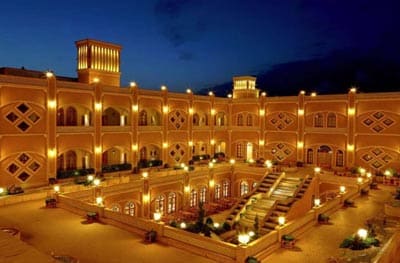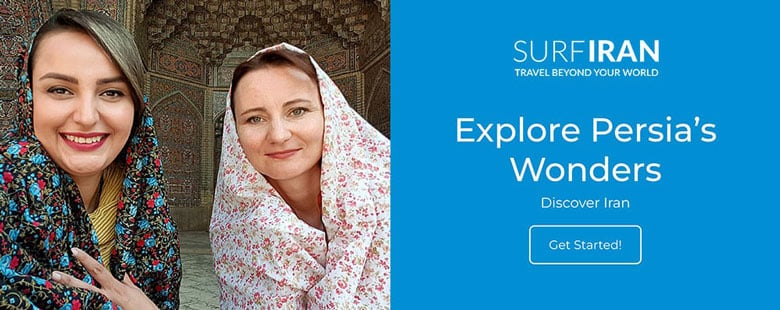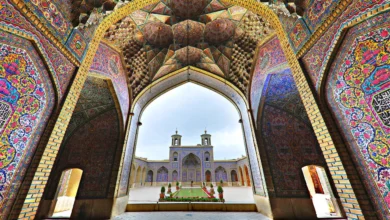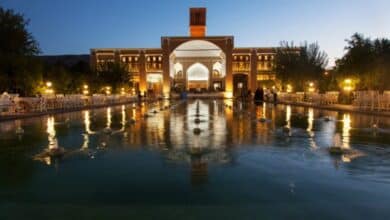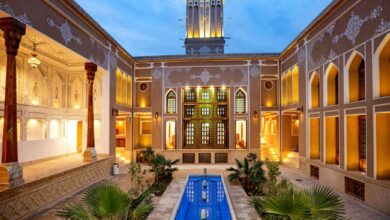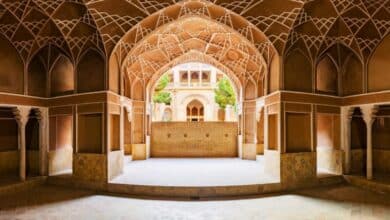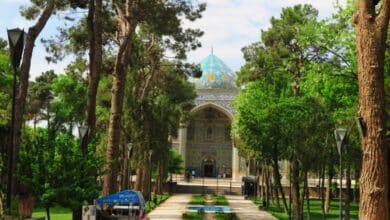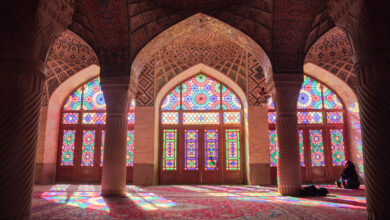Meybod Caravanserai: A Stop on the Silk Road
An Architectural Masterpiece from Ancient Times in Yazd Province
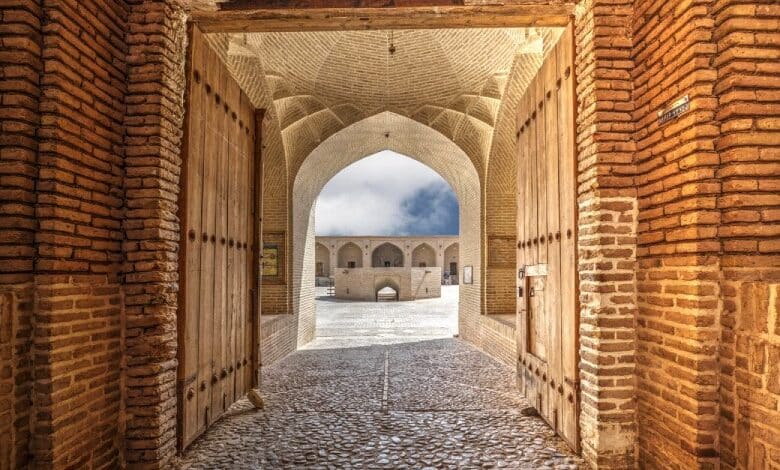
On September 17, 2023, during the 45th session of the UNESCO World Heritage Committee held in Riyadh, the Meybod Caravanserai, located in the Yazd Province of Iran along the Silk Road, was added to the World Heritage List.
In addition to Meybod’s caravanserai, 53 other historical caravanserais from 24 provinces of Iran were recognized, bringing the total to 54 and designating them as “Iranian Caravanserais.” This addition marks Iran’s twentieth and twenty-seventh entries on the World Heritage list.
Stay with us to learn more about this popular tourist destination in Iran:
Contents
Historical background
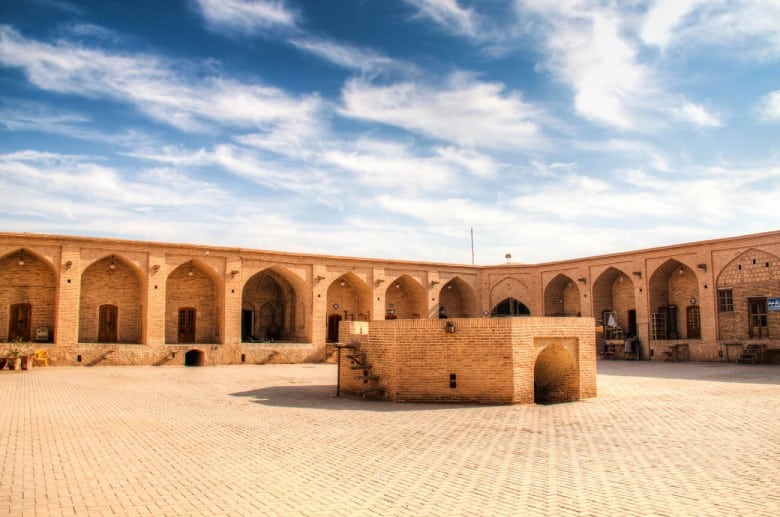
Established by the Han dynasty in the late 2nd century B.C., the Silk Road was a network of routes for over 1,500 years, extending approximately 6,437 kilometers (4,000 miles) across diverse landscapes, such as the Gobi Desert. The silk trade peaked during the Tang dynasty, significantly contributing to China’s economic growth.
The Silk Road was crucial for trade and exchanging ideas, religions, and innovations. This exchange fostered technological advancements and cultural development. However, a darker aspect of this extensive trading route was its role in spreading diseases, with some research suggesting a connection to the outbreak of the Black Death in Europe.
In ancient times, silk was highly valued and sometimes used as currency alongside gold and silver. By 531 AD, rivalry over control of the Silk Road arose among Persians and Byzantines. The Silk Road facilitated significant economic activity during the Sasanian Empire, when Iranian merchants dealt with honey, herbs, textiles, and precious stones, mainly exporting to China.
Traders traveled in caravans for safety, and caravanserais provided lodging for them. Today, parts of the Silk Road, including Meybood Caravanserai in Iran, hold UNESCO World Heritage status and reflect its historical significance as a major trade network connecting East and West.
Architecture
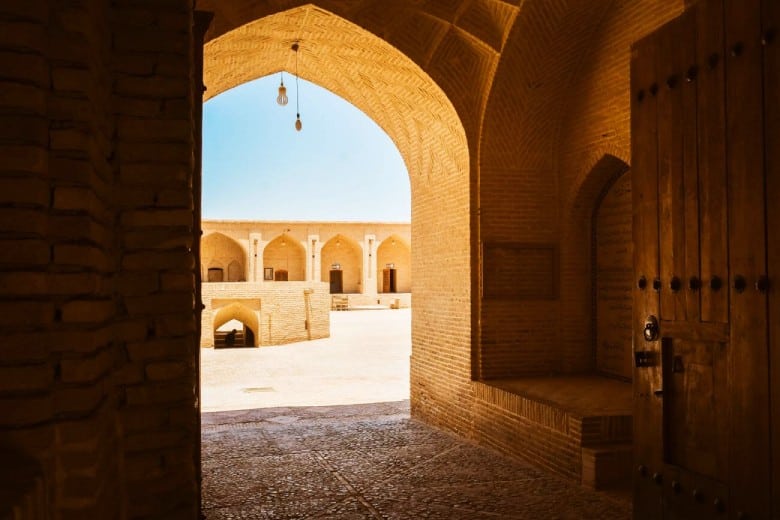
This brick building is designed in the four-iwan style. It features a corridor, outer iwans, an entrance vestibule, a central courtyard, a pool house, a moonlit area, and four beautiful vestibules. There are also covered spaces on the East and west, along with one hundred iwans, rooms, and ovens for travelers’ use. The caravanserai is built on a square plan with a central courtyard design.
The entrance is at the southern midpoint, accessed through a covered passage called “Sul.” The exterior and interior of the caravanserai include iwans, rooms, and various open and covered spaces, catering to the needs of the caravans that once resided there. The total number of inner and outer chambers is nearly 100, with 24 in the courtyard.
The courtyard’s center is a small octagonal pool house where water from the Qanat flows to fill the pool. This feature is unique to the Meybod caravanserai. During the hot summer in the desert, the pool house provided a calm and pleasant area, with alcoves constructed around it for travelers to rest. A large cistern is nearby, with a brick dome and four tall windcatchers. Iwans are built in the middle of each side.
Still, because their height is equal to that of the adjoining alcoves and due to the similarity in their openings, the iwans appear less prominent to the viewer, diminishing their significance. In this caravanserai, less space is allocated to the chambers, even though some chambers are similar in size to facing alcoves.
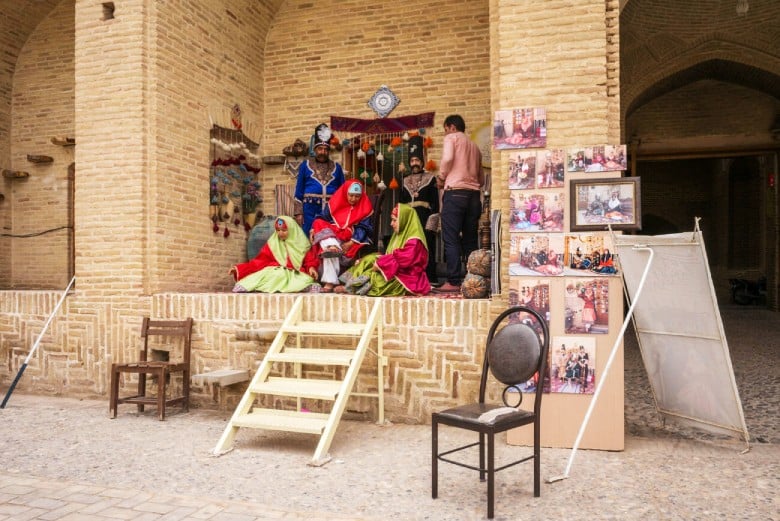
Alcove-like spaces in the four corners of the courtyard provide access to the stables and storage rooms and lead to the roof ladders. Unlike many caravanserais, the stables here are not arranged circularly around the building; they are located only behind the western and eastern walls. Elongated storage spaces are situated behind the chambers on the northern and southern fronts.
The entrance to the caravanserai is from its northern section, with the entrance to the cistern positioned in front of it. These two buildings are located adjacent to a small marketplace. Although the caravanserai’s entrance lacks an alcove and opens directly into the northern iwans, the spaciousness at the end of the iwans serves a similar purpose. Due to its proximity to the city fortress, this caravanserai enjoys complete security and, perhaps for this reason, lacks defensive features such as a tower.
The Nearby attractions
1. Kolar Water Reservoir (Ab Anbar-e Kolar)
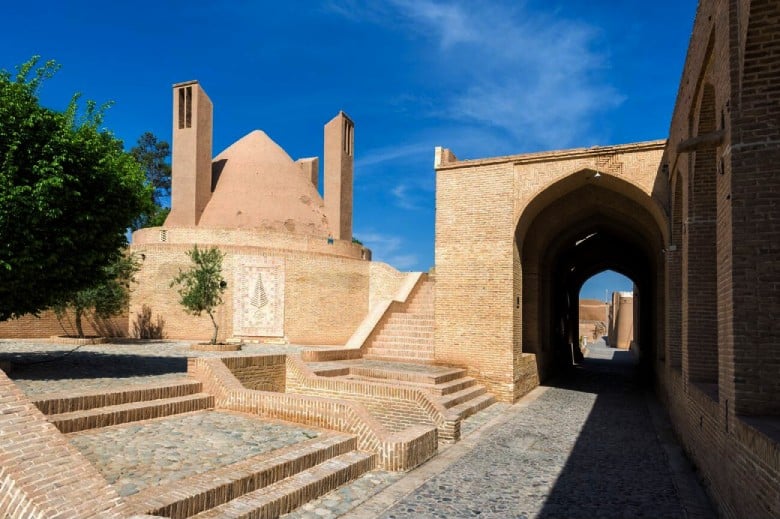
Built-in 1691, it is on the opposite side of Meybod Caravanserai; a dome and four wind catchers are noticeable from the street. The region’s desert climate necessitated sophisticated water reservoirs to store water from Qanats, seasonal water streams, and rainfalls in the cold seasons for consumption during the dry seasons. The dome structure and four wind catchers, with the underground pond, are all ventilation measures to keep the water reserve fresh, calm, and free from bacteria and impurities.
2. Icehouse of Meybod
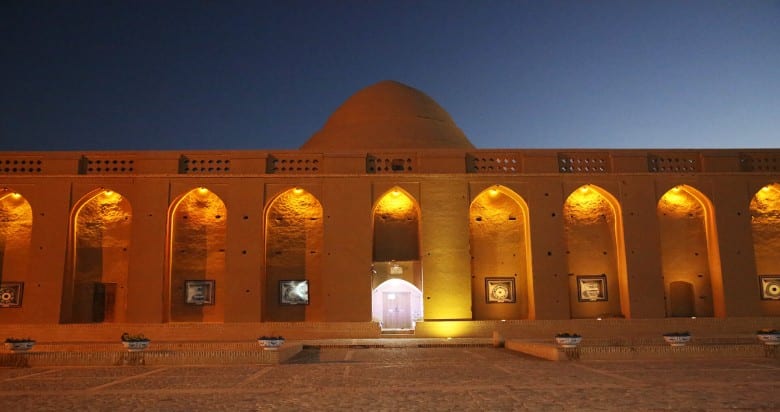
Across the street from Meybod Caravanserai stands a grand Icehouse from the Qajar era (18th-19th century). The icehouse functioned as an ice reservoir for use during the hot seasons. The ponds at the foot of the high walls of the icehouse allowed the freezing of water in the shade in wintertime. Ice blocks were then stored in the underground reservoir with a high dome to facilitate ventilation.
3. Chaparkhaneh (Pony Express) of Meybod
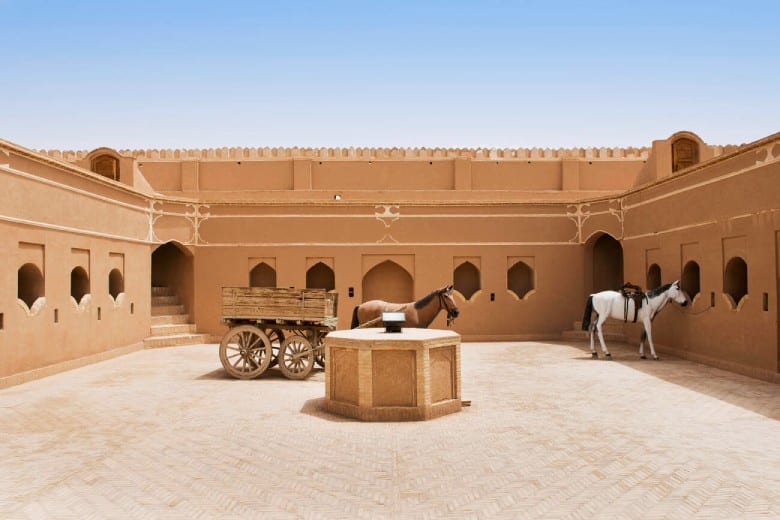
The Chaparkhaneh of Meybod, now operating as the Post Museum of Meybod, is located next to the Meybod Caravanserai and dates back to the Qajar era. This historic site once functioned as a mail delivery station supported by agile couriers. Today, it features displays of fiberglass horses and mannequins that depict the various functions of the station from that period.
Final Words
The Meybod Caravanserai, located in Yazd Province, Iran, was added to the UNESCO World Heritage List on September 17, 2023, as part of a group of 54 historical caravanserais. This designation marks Iran’s 20th and 27th entries on the list.
The caravanserai features a four-iwan architectural style with a central courtyard, a unique pool house, and nearly 100 chambers. It is situated near a city fortress but lacks defensive features. Its nearby attractions include the Kolar Water Reservoir, built in 1691, and a Qajar-era icehouse, which is significant for water storage in the desert. The Caravanserai Museum is open daily from 8 AM to 11 PM.
FAQ
Where is Meybod Caravanserai located?
The Caravanserai in Meybod, located in Yazd Province, Iran
What was the usage of the Meybod Caravanserai?
Traders traveled in caravans for safety, and caravanserais provided lodging for them.
What was the significance of the Silk Road?
The Silk Road was crucial for trade and exchanging ideas, religions, and innovations. This exchange fostered technological advancements and cultural development.
